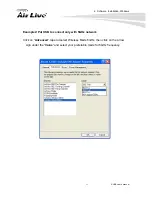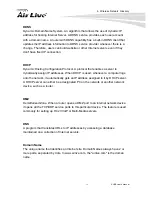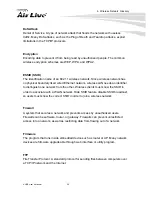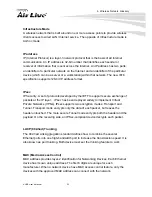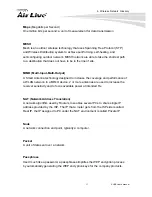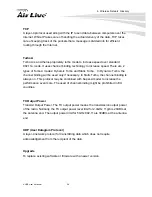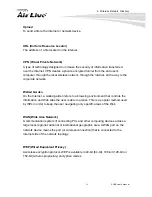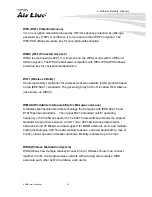
5. Wireless Network Glossary
17
X.USB
User’s Manual
Access Point (AP)
The central hub of a wireless LAN network. Access Points have one or more
Ethernet ports that can connect devices (such as Internet connection) for sharing.
Multi-function Access Point can also function as an Ethernet client, wireless bridge,
or repeat signals from other AP. Access Points typically have more wireless
functions comparing to wireless routers.
ACK Timeout
Acknowledgement Timeout Windows. When a packet is sent out from one wireless
station to the other, it will waits for an Acknowledgement frame from the remote
station. The station will only wait for a certain amount of time; this time is called the
ACK timeout. If the ACK is NOT received within that timeout period then the packet
will be re-transmitted resulting in reduced throughput. If the ACK setting is too high
then throughput will be lost due to waiting for the ACK Window to timeout on lost
packets. If the ACK setting is too low then the ACK window will have expired and the
returning packet will be dropped, greatly lowering throughput. By having the ability
to adjust the ACK setting we can effectively optimize the throughput over long
distance links. This is especially true for 802.11a and 802.11g networks. Setting the
correct ACK timeout value needs to consider 3 factors: distance, AP response time,
and interference.
Bandwidth Management
Bandwidth Management controls the transmission speed of a port, user, IP address,
and application. Router can use bandwidth control to limit the Internet connection
speed of individual IP or Application. It can also guarantee the speed of certain
special application or privileged IP address - a crucial feature of QoS (Quality of
Service) function.
Bootloader
Bootloader is the under layering program that will start at the power-up before the
device loads firmware. It is similar to BIOS on a personal computer. When a
firmware crashed, you might be able to recover your device from bootloader.









